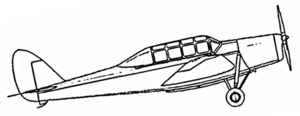
The de Havilland DH.82 Tiger Moth is a 1930s British biplane designed by Geoffrey de Havilland and built by the de Havilland Aircraft Company. It was operated by the Royal Air Force (RAF) and many other operators as a primary trainer aircraft. In addition to the type's principal use for ab-initio training, the Second World War saw RAF Tiger Moths operating in other capacities, including maritime surveillance and defensive anti-invasion preparations; some aircraft were even outfitted to function as armed light bombers.

The de Havilland DH.60 Moth is a 1920s British two-seat touring and training aircraft that was developed into a series of aircraft by the de Havilland Aircraft Company.

The DH.83 Fox Moth was a successful small biplane passenger aircraft from the 1930s powered by a single de Havilland Gipsy Major I inline inverted engine, manufactured by the de Havilland Aircraft Company.

The Chrislea Super Ace is a 1940s British four-seat light aircraft built by Chrislea Aircraft Limited.

The de Havilland DH.75 Hawk Moth was a 1920s British four-seat cabin monoplane built by de Havilland at Stag Lane Aerodrome, Edgware.

The de Havilland DH.71 Tiger Moth was a British single-seat monoplane, designed to research high-speed flight and to test replacement engines for the Cirrus. Only two were built.

The Miles M.5 Sparrowhawk was a 1930s British single-seat racing and touring monoplane designed by Miles Aircraft Limited.

The Caudron C.280 Phalène ("Moth") was a civil utility aircraft built in France during the 1930s. It was a high-wing braced monoplane of conventional configuration with fixed tailskid undercarriage. The pilot and two-three passengers were accommodated within an enclosed cabin. The structure was wooden throughout, with the forward fuselage skinned with plywood, and the rest of the aircraft fabric-covered.
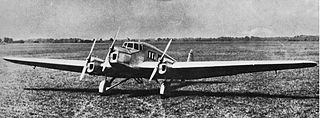
The Fiat G.2 was an Italian three-engine six-passenger monoplane transport aircraft designed by Giuseppe Gabrielli and built by Fiat.
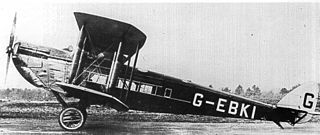
The de Havilland DH.54 Highclere was a single-engined 15-passenger biplane airliner designed to replace the DH.34. Its development ended when Imperial Airways decided to use only multi-engined types.
The de Havilland DH.72 was a large British three-engined biplane bomber, designed as a Vickers Virginia replacement. It did not go into production.

The de Havilland T.K.2 was a British 1930s single-engined monoplane, designed by students of the de Havilland Aeronautical Technical School. It won two races before World War II, and afterwards set a class closed circuit speed record.

The Miles M.13 Hobby was a small low-winged monoplane built for racing and research in the United Kingdom just before World War II. A single engined single seater, it ended its days in the wind tunnel at the R.A.E.
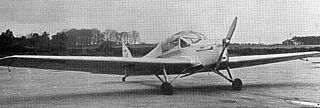
The de Bruyne DB-2 Snark was a British experimental four-seat cabin monoplane designed by N. A de Bruyne and built by Aero Research Limited (ARL) of Cambridgeshire. It was built to test low weight, bakelite-bonded plywood, stressed skin wing and fuselage structures.

The Comper Streak was a single-engined, single-seat racing monoplane built in the UK in the mid-1930s. It was not successful as a racer and only one was produced.
The Koolhoven F.K.57 was a twin-engined, gull-winged monoplane built in the Netherlands as a personal transport for the Director General of Royal Dutch Shell. Only one was made, flying chiefly in Europe in the year before World War II, but destroyed when Germany invaded the Netherlands in May 1940.

The IAR-22 was a single engine basic trainer built in Romania in about 1934. It was a low-wing monoplane with two seats in tandem and a fixed conventional undercarriage.

The Bernard 200 T was the first of a series of French light touring aircraft from the early 1930s. Single engined and seating three or four, they were high cantilever wing monoplanes. Four Bernard 200 T were built and subsequently modified into three further variants.
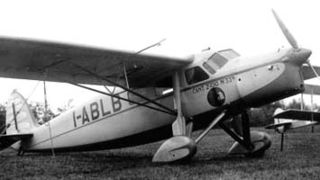
The CANT Z.1010 was a single engine, five seat Italian passenger aircraft flown in the mid-1930s. Only one was built.

The Koolhoven F.K.54 was a Dutch single-engine, three-seat touring aircraft with a retractable undercarriage. It flew shortly before the start of World War II and its development was abandoned after its first flight as attention turned to military aircraft.
